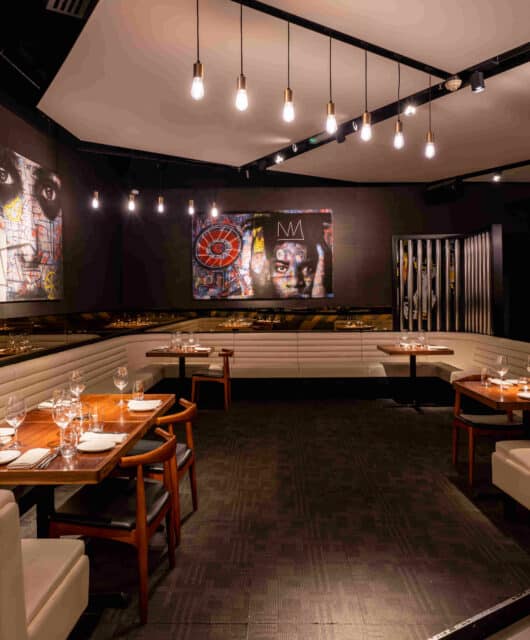Louvre Abu Dhabi is opening its door for visitors on November 11, 2017. Artworks and artefacts from the region will be displayed alongside Louvre Abu Dhabi’s permanent collection and 300 loans from Musée du Louvre and 12 leading French partner museums. Together, they will tell a universal story of art from pre-history showcasing archaeological findings to contemporary times with installations of established regional artists.
Highlights of loans from the region include a prehistoric stone tool dating back to 350,000 BCE, a milestone indicating the distance from Mecca in Kufic inscriptions, a funerary stele from Mecca dating back to 700–900 CE (100–300 AH) from the Saudi Commission for Tourism & National Heritage, a collection of over 400 silver Dirhams Coins from the Abbasid Caliphate of Iraq, the Samanid Dynasty and the Saffarid Dynasty discovered in Sidamah (al-Waqba) in 2005 CE (1425 AH) from the National Museum – Sultanate of Oman, and an 8000-year-old two-headed figure from Jordan’s Department of Antiquities called Ain Ghazal Statue.
Displayed in the museum’s first gallery for visitors to explore humanity’s earliest artistic expressions are loans from the UAE, including a precious pendant dating back to 2000-1300 BCE from the National Museum of Ras Al Khaimah. Also displayed in the gallery will be a painted Neolithic vase from the island of Marawah, the oldest ceramic vessel yet discovered in the country. In addition, a fragment of stucco from an ancient church in Sir Bani Yas, as well as an axe-head from Al Ain Museum dating 1000–600 BCE, will be shown. These loans embody the UAE’s rich cultural heritage, and tell the story of the country’s strong historic connections with the wider world, completing the universal narrative of Louvre Abu Dhabi.
HE Mohamed Al Mubarak, chairman of the department of Culture & Tourism – Abu Dhabi, said: “We are proud to have the collections displayed in Louvre Abu Dhabi, the first museum to open in the Saadiyat Cultural District and to share the UAE’s story alongside other cultures. We have always aimed to build strong partnerships with cultural institutions in the region in order to share knowledge. Louvre Abu Dhabi’s visitors will learn about the UAE’s rich past and contemporary art scene through these loans, which was a crossroad of many civilisations, leading to our cosmopolitan city of today.”
Manuel Rabaté, Director of Louvre Abu Dhabi, commented: “Displaying these artworks demonstrates the collaboration between the local and regional institutions help to tell the story of art from a Middle Eastern perspective, and supports the ongoing cross-cultural exchange and understanding which Louvre Abu Dhabi embodies.”







